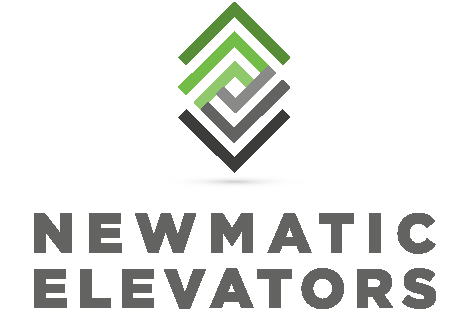Passenger or platform lifts – Which is best?
How do you decide if your project needs a passenger lift or a platform lift? Richard McPartland an editor of theNBS.com explores the pros and cons of these access solutions and some of the key considerations, whichever you opt for.
If your building has multiple floors or spaces where the floor levels change then its likely that you’ll need to consider some kind of lift to quickly and efficiently move people through your spaces. Lifts also are invaluable when it comes to ensuring easy access for those with impaired mobility across multiple storeys.
What is a lift?
In a nutshell, a lift facilitates the vertical circulation of people in a building, whether it’s a simple change in level (where it is not possible to provide a ramp), or the building has two or more floors that people need to travel between.
Passenger lifts and platform lifts serve the purpose of transferring passengers between floors but which should you specify? That’s what this guide aims to explore.
What are the main differences between passenger and platform lifts?
Passenger lifts
A passenger lift is probably what first springs to mind when you mention the word ‘lift’. They come in a range of shapes and sizes and can carry multiple passengers (from 2 to 30 or more, though typically accommodate around 8 or 12).
The installation of a passenger lift requires a lift shaft to be built to house a passenger car and winding mechanism which moves that car within the shaft. A lift pit (typically over a metre tall) is also needed to allow the lift car to stop level with the lowest floor.
Passenger lifts fall under the Lift Directive, so travel faster than 0.15m/s, allowing for the relatively rapid movement of people through a building – typically a journey takes around 18 seconds between floors.
Part M of the Building Regulations advocates the 1100mm (w) x 1400mm (d) passenger lift as the most suitable form of vertical transport in multi-storeyed buildings. As an alternative to a passenger lift, a platform lift may be considered.
A lift facilitates the vertical circulation of people in a building, whether it’s a simple change in level (where it is not possible to provide a ramp), or the building has two or more floors that people need to travel between.
Platform lifts
The origins of the platform lift can be traced as far back as the 1800s when they were used to transport goods in ships. For the last 40 years or so the technology has also been applied to the task of transporting people and has found particular favour as an access solution for wheelchair users.
Sometimes called vertical lifting platforms, platform lifts are best suited to smaller passenger numbers travelling shorter distances. Platform lifts typically don’t travel more than 2m (unless a liftway enclosure has been built). Their speed is also limited to 0.15m/s so platform lifts fall under the Machinery Directive (not the Lift Directive) – travel between floors averaging around 22 seconds.
Platform lifts can be used indoors or out and can also be designed for use in vertical and inclined spaces – even curved staircases. Crucially, platform lifts do not need a capacious pit to be dug – a 75mm pit is a possibility, compared to the 1.2m you’d need for a passenger lift. The floor of the lift is raised and lowered from below by a corkscrew-like nut/screw system that sits snugly underneath the platform. In situations were space is tight a platform lift can be a good solution – requiring a much smaller footprint than a traditional passenger lift.
Platform lifts come in a range of sizes – typically accommodating somewhere between one person / one wheelchair user up to five people.
A number of different types of platform lift are available. These include:
- Open platform lifts which are typically used over short distances, moving user(s) vertically on a guarded platform, from one level to another. These lifts are best suited when there is a relatively small change in floor level where it is not possible or practical to provide a ramp. A continuous pressure push button is used to operate the lift. Passengers will typically enter on one side of the platform and enter on the other, eliminating the need for wheelchair users to turn. These kinds of lift should conform to BS 6440:2011.
- Enclosed (or cabin) platform lifts which are in a structure with a moving platform and control panel moving up inside the structure under constant pressure. A passenger needs to keep their finger on the control button for the lift to operate and sees the entire structure from their vantage point on the platform as the lift goes up or down. These are best suited for serving a smaller number of floors (certainly no more than six) given the requirement to constantly press the button to progress. These should conform to BS EN-81-41 and the Machinery Directive.
- Low pit lifts (sometimes called low speed lifts) which are structure-supported or wall-mounted and have the look and feel of a traditional passenger lift, with the same doors, cabin and operation, but travel at a reduced speed in comparison to a traditional passenger lift. A passenger will not see the moving walls of the structure and there is greater potential to customise finishes inside the passenger space. The lack of encroachment onto landings helps keep the footprint of the lift to a minimum. These should conform to BS EN 81-41:2010.
- Cabin platform lifts which are built in a structure. Here passengers travel in a cabin with walls, a floor and a ceiling to provide a more traditional enclosed feeling. The lift is operated by one-touch control so constant pressure on a button is not needed for the cabin to move making the experience more akin to a traditional passenger lift.
- Wheelchair platform stairlifts, also called inclined platform lifts, have a platform that follows the line or curve of the stairs. Here a platform is mounted on a rail that follows the contour of the stairs. These lifts are suitable for one user at a time and controls can be operated by a seated user or nearby attendant.
Which type of lift do I need?
Passenger lifts have a certain ubiquity and are favoured where speed and capacity are prime considerations, and in particular in situations where the lift will be the primary means of travelling between floors. That said, platform lifts have much to recommend them too.
Typically, platform lifts are probably most suited for applications in low rise buildings where most people will use the stairs, existing buildings where it may not be possible or too costly to install a passenger lift or buildings where there is a particular disabled access problem. The case for opting for such as solution over a passenger lift can be clearly set out in an access statement.
Platform lifts are also increasingly finding favour in residential settings.The smaller footprint and less onerous requirements to accommodate winding gear (above) and lift cars (below) can provide flexibility, speed of installation and cost savings.
What to read next
New standards for lifts (EN 81-20 and EN 81-50)
Two new European standards – EN 81-20 and EN 81-50 – have come into effect for all lift installations established from 1 September 2017. Here we detail some of the key changes introduced with the aim of improving passenger and technician safety.
Elevation’s new sensation: thyssenkrupp look to take a towering lead in lift market
Lift shafts put a dampener on our architectural ambitions so what if lifts could travel horizontally and vertically? thyssenkrupp have unveiled a vision of the future Wonka would be proud of.







